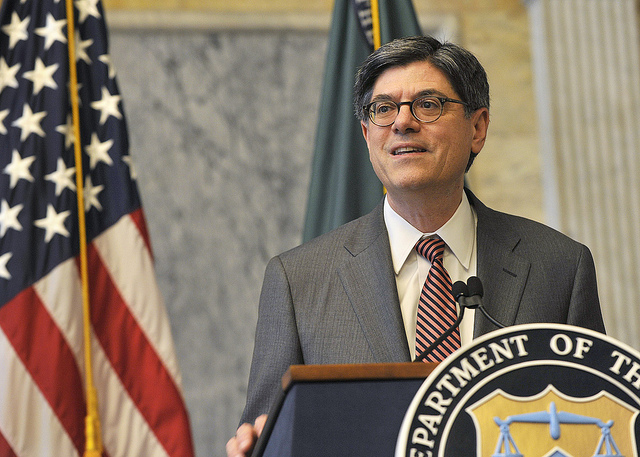
It’s a start.
Treasury Secretary Jack Lew and Transportation Secretary Anthony Foxx are among those headlining the Infrastructure Investment Summit at the Treasury Department today. It’s part of the Obama Administration’s Build America Investment Initiative, an ongoing effort to draw attention to the need for significant infrastructure fixes, which will create jobs and boost America’s national competitiveness.
As part of the summit, the White House announced several public-private partnerships designed to spur job creation and economic improvements, including an estimated $50 billion of “projected private capital investment in the U.S. infrastructure market over the next five years.”
The White House notes:
The President has been clear that we need to do more to improve our roads, bridges, water systems, electrical grids, and other vital infrastructure systems. That means increasing public support for infrastructure and making investments for the long-term. But it also means encouraging partnership between the public and private sector; and right now there is a real opportunity to put private capital to work revitalizing U.S. infrastructure.
Specific commitments include a $950 million Department of Transportation loan for the Orlando, FL 1-4 Ultimate highway project, which will reconstruct and expand 21.1 miles of Interstate 4, which includes 15 interchanges, 71 existing bridges and the addition of four new express toll lanes. The U.S. Department of Agriculture also announced $518 million in loans for electricity infrastructure, and 30 cities and public water utilities announced they will invest $233 billion to improve their municipal water systems. Meanwhile, the Ford Foundation and the Rockefeller Foundation announced they will initially invest about $1 million to “support innovations in U.S. infrastructure.”
All of these commitments are great, and we’re happy to see the administration draw attention to this vital issue. The fact that so many private sector leaders are willingly taking action to address infrastructure showcases how important it is to the business community.
Unfortunately, today’s commitments are just a drop in a very, very big bucket. We’re going to need more than a handful of loans and research grants to successfully rebuild our nation’s infrastructure.
But don’t just take our word for it. Here’s a snippet of Lew’s remarks:
We face a funding gap of $1 trillion in transportation, water, and electricity needs between now and 2020. The statistics paint a clear picture. One out of nine bridges in the U.S. is structurally deficient. Roughly two-thirds of our roads are in less than good condition. And many of our ports are not deep enough to receive the next generation of supertankers.
Our infrastructure deficiencies hinder economic growth, undermine business productivity, and hurt family budgets. The electric grid’s low resilience leads to weather-related outages that cost the U.S. economy, on average, somewhere between $18 billion and $33 billion every year. Poor road conditions force American companies to pay an extra $27 billion a year in freight costs. And inadequate infrastructure costs Americans as much as $120 billion a year in extra fuel and lost time.
Unless we reverse this trend, the consequences of failing to provide and maintain our infrastructure will be severe.
The United States currently ranks 19th in the world when it comes to infrastructure investment. It is vital that we take action now in order to ensure we remain competitive in the decades to come. Rebuilding our infrastructure also will create jobs — more than 21,000 for each $1 billion invested in transportation infrastructure, in fact.
